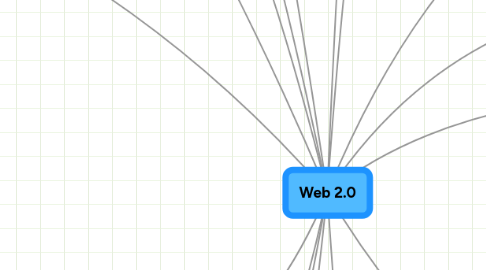Web 2.0
by M C Morgan


1. change in role of academy
1.1. organizes courses
1.2. curators
1.3. certification
1.4. working space
1.5. access
2. changes in learning
2.1. social media
2.2. informal learning
2.3. just in time learning
2.4. changes in student - teacher relation
2.5. PLEs
2.6. MOOCs
2.7. student-driven
2.8. student-owned
2.9. practices
2.10. changes in ownwership of knowledge
3. scholarship 2.0
3.1. change in scholarly practices and values
3.2. always on publication
3.3. open collaboration
3.4. changes in refereeing
3.5. online journals, papers, conferences, theses
4. My Geistesblitzes
4.1. read/write web
5. origins
5.1. web 1.0 / Read only
5.2. Berners-Lee's original vision
5.3. email as most powerful app
5.4. usenet BBS
5.5. New node
6. 1st gen 2.0 apps: user-driven
6.1. blogs-1999
6.2. wikis - 1995
6.3. IM and SMS
7. 2nd gen 2.0 social apps:
7.1. MySpace
7.2. Facebook
7.3. twitter
7.4. tumbler
7.5. flickr
7.6. google docs
7.7. MindMeister
7.8. del.icio.us
7.9. technorati
7.10. blogger
7.11. wikis
7.12. WordPress
7.13. Quora
8. development on the desktop
8.1. participate by multiple means
8.2. participate by multiple devices
8.2.1. multiple devices access common content
8.3. participate in multiple modes
9. fostering
9.1. person to person contact
9.2. collaboration
9.3. sharing
9.4. folksonomy
9.5. findability
9.6. increased social networking
9.7. micro marketing
10. critiques
10.1. hype in the manner of web 1.0 bubble
11. but also fostering
11.1. amateurism
11.2. suspicion of expertise and professionalism
11.3. equating of authority with authenticity
11.4. impatience: sense of instant availability
11.5. consumerist perspective of knowledge and people
12. new literacy
12.1. collaborative language
12.2. sophistic rhetoric
12.3. visual literacies
12.4. habit and methods of critique
12.5. sense of history
12.6. transliteracy
12.7. models and theories of evaluation
12.8. dialogic
12.9. multimodal texts
13. pedagogy 2.0
13.1. changes in access
13.1.1. mobile learning
13.1.2. SL and other immersive environs
13.2. what stays the same
13.3. constructivism
13.3.1. MOOCs
13.3.2. PLEs
13.4. New node
14. business 2.0
14.1. micro marketing
14.2. viral advertising
14.3. customer created content
14.4. ...
15. Where Next?
15.1. web 3.0
15.1.1. semantic web
